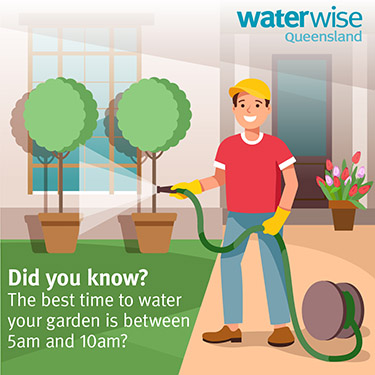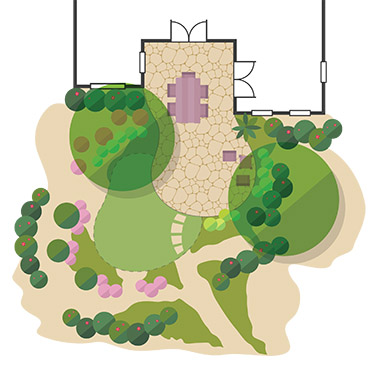Waterwise gardening

Water-efficient gardens require less maintenance. Some tips on how to be a waterwise gardener (PDF, 563KB) include:
- plan your garden to ensure it is practical, affordable and water efficient
- identify and improve your soil
- mulch to help retain soil moisture
- have an efficient irrigation system.
When installing an outdoor irrigation system, the Queensland Plumbing and Wastewater Code requires it to be water efficient. To help you fulfill this requirement, we’ve developed some guides on establishing and maintaining water efficient gardens (PDF, 1.4MB) and active playing surfaces (PDF, 687KB).
Checklists are also available for home gardens (PDF, 143KB) and active playing surfaces (PDF, 95KB).
You can also read the full efficient irrigation guidelines (PDF, 6MB) for more detail.
Gardening expert, Costa Georgiadis, believes the guidelines are a great for sharing ways to have water-efficient gardens.

Planning your garden
When planning your landscape and irrigation system, you should consider the following elements:
- natural characteristics – existing plants, soil type and depth, drainage/slope, wind, sun, microclimates
- types of plants to be grown
- water source (irrigation system or hand watering, quantity, quality and pressure)
- use of different areas (e.g. children’s play areas), views, screening required
- maintenance requirements
- budget.
One of the main keys to saving water is to know and improve your soil. You can improve your garden’s soil and water efficiency by mulching, and by adding organic matter or wetting agents.
When planting or laying grass for the first time, make sure you choose one that is suitable for the Queensland climate and that is water-efficient. Choose your plants based on the climate and soils of the area. Planting hardy shrubs and drought-tolerant plants will help save water.
Divide your garden by zones
Different plants need different amounts of water. It is recommended that you design your landscape so plants are grouped together based on their water, soil and sun requirements. Preferably, each zone will have plants with similar water requirements.
Include shaded areas and windbreaks
Identify areas where shady trees, shade sails, pergolas or other structures could be incorporated into your plan.
Strong winds can increase evaporation so consider providing windbreaks to protect your plants.
Additional resources
For more detailed guidance, refer to the following checklists:
Waterwise gardening
In this guide:
- Next ( https://oss-uat.clients.squiz.net/environment/water/residence/use/garden/plants )


